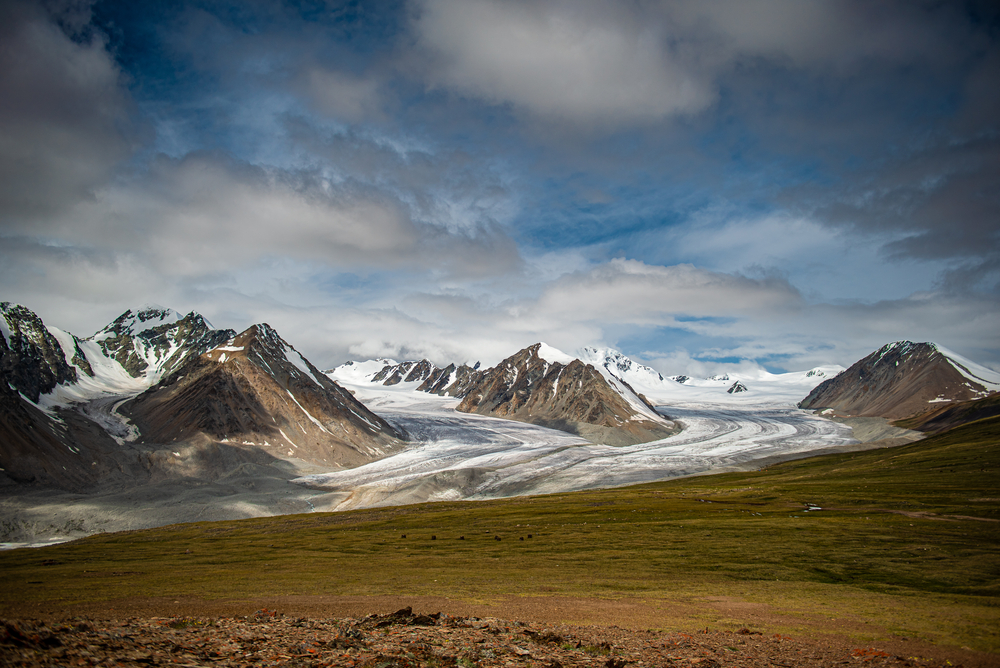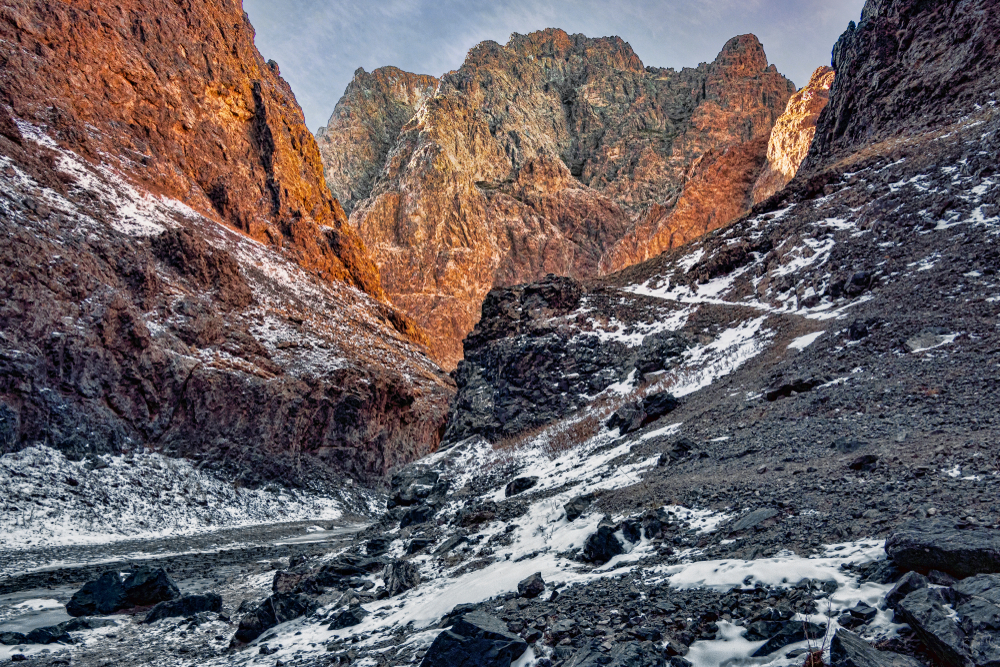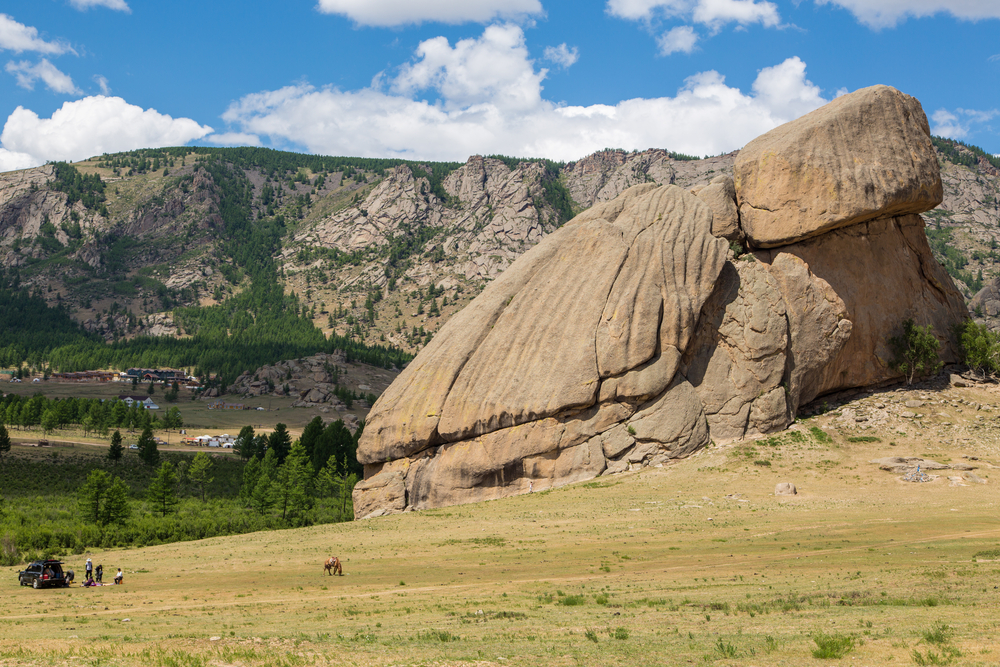Altai Tavan Bogd Overview
Altai Tavan Bogd National Park, known locally as Алтай Таван Богд үндэсний парк, is one of Mongolia’s most breathtaking and culturally significant protected areas. Encompassing approximately 2,317 square miles (6,682 square kilometers), the park is located in the far western region of Mongolia, at the convergence of Mongolia, Russia, and China.
The name “Altai Tavan Bogd” translates to “Five Holy Peaks of the Altai,” referencing the five majestic peaks of the Tavan Bogd mountain range. Among these, Khüiten Peak stands as the tallest in Mongolia, rising to an impressive 14,350 feet (4,374 meters).
The terrain of the park is as diverse as it is striking, featuring rugged snow-capped mountains, expansive glaciers such as the Potanin Glacier, lush valleys, and serene alpine lakes like Khoton and Khurgan. These lakes, along with the winding rivers and verdant meadows, create a vibrant mosaic of ecosystems. The vegetation ranges from alpine tundra and steppe grasslands to dense larch forests, providing a unique habitat for various plant species.
Altai Tavan Bogd is a haven for wildlife enthusiasts. The park is home to iconic mammals such as the elusive snow leopard, Argali sheep, Siberian ibex, and gray wolves. Bird watchers will delight in spotting golden eagles, bearded vultures, and demoiselle cranes, among other avian species that thrive in the region. The interplay of flora and fauna within the park underscores its ecological richness.
Culturally, the park is just as captivating. It is the site of numerous ancient petroglyphs, burial mounds, and standing stones that date back thousands of years, offering a glimpse into the lives of the people who once inhabited this remote area. The park is also home to the Kazakh nomadic herders, who maintain their traditional lifestyle and are renowned for their eagle hunting practices.
Visitors to Altai Tavan Bogd National Park can engage in a variety of activities. Trekking and horseback riding are among the most popular ways to explore the park’s vast landscapes, with routes leading to the base of Khüiten Peak or the Potanin Glacier. Mountaineering enthusiasts are drawn to the challenging ascents of the park’s towering peaks. For those seeking a cultural experience, staying with Kazakh families or witnessing their traditional festivities provides a unique opportunity to connect with the local heritage.
Conservation efforts in Altai Tavan Bogd National Park have been focused on balancing ecological preservation with the needs of the indigenous communities. Challenges include managing human-wildlife conflict, combating illegal hunting, and mitigating the effects of climate change on the park’s glaciers and biodiversity. However, significant successes have been achieved through collaborative initiatives between local communities, conservation organizations, and the government, ensuring the protection of this extraordinary landscape.












































































